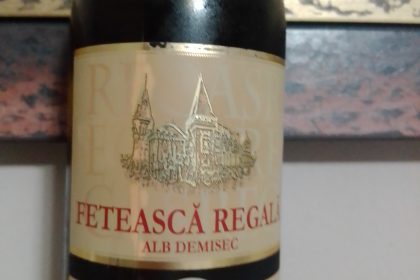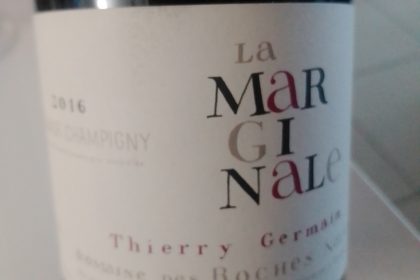How can the same grape create such different results depending on the location where it was cultivated? There are those that say it’s the terroir, others claim it’s the weather conditions, others award the responsibility solely to the winemakers. If we can use humans as an example of how while being ‘the same‘ we can be so different depending on where we live, it shouldn’t be so far fetched to believe that grapes learned to adapt to their surroundings and develop independent expressions.
For my first exercise comparing grapes I decided to go ahead and start with Chardonnay because it’s a worldwide recognized grape and it’s one of the noble grapes and since we are coming from a royal weekend I just decided to go with it. Very briefly, Chardonnay is a green skinned grape, used to make white wine and sparkling wine. Among the many theories about the grapes origin, I enjoy the one backed by UC Davis research team that states the DNA of the grape points to it being a cross between Pinot Noir and Gouais Blanc during the time of the romans. Many countries claim the origin of the grape so it felt like another great reason to use it to start the exercise.
I went ahead and found two wines, from the same grape, from the same year and from the same cost range. This is important because even though price should not determine quality of a wine…it’s hard not to think that it does. So let’s get to know the participants.
[divide color=”#000000″]
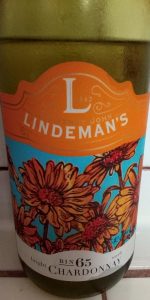
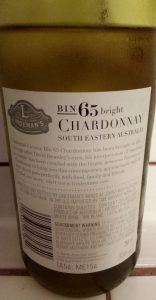
Name: Bin 65
Producer: Lindeman’s Wine
Year: 2016
Grape: Chardonnay
Region: South Eastern Australia
Country: Australia
Alcohol: 13.5%
Format: 750ML
Wine Closing: Screwcap
[divide color=”#000000″]
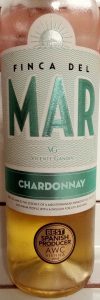
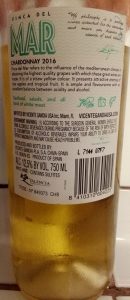
Name: Finca del Mar
Producer: Vicente Gandia
Year: 2016
Grape: Chardonnay
Region: Valencia
Country: Spain
Alcohol: 12.5%
Format: 750ML
Wine Closing: Synthetic cork
[divide color=”#000000″]
I picked these wines because I believed them to be quite close to one another and make the analysis not one too easy. Comparing either one of these wines with something from California or France wouldn’t have been a comparison at all. So the Tell of The Tale seemed like a fair one. Full disclosure, I’ve had the Bin 65 quite a few times before, I have never even seen the Finca del Mar till a couple of days ago. I opened them with a few family members without telling them what each glass had.
Before going into the main categories of analysis it’s interesting to mention that they both have alternative methods of closing the bottle. These are young wines intended to be enjoyed soon after purchase so in my opinion it equalizes the competition a bit. There’s no breathing being done by these wines. The labels is something else that I like to analyze because while the content of the bottle is the most important part, it’s still a product that needs to be sold and purchased and branding has an effect on people. There’s a reason why Quaker Oates has a happy looking dude as a logo within a box full of bright colors: oatmeal looks horrible. In this sense I’m happy that Bin 65 modernize their look. Their previous label was informative but not necessarily appealing. The flowers now and the blue background together with the red-ish orange looks good. On the other hand, Finca del Mar has a really simple label but it looks very much engaging. From the font (yes, that’s important too. Most of my friends are graphic designers and one picks a thing or two), to the colors selected. They are different styles because one is a logomark and the other is more of a logotype.
Once served on the glasses, the first thing I analyzed was the color. Finca del Mar was lighter in color and it had that pale yellow-green usually found on light bodied wines while the Lindeman’s had a more yellow straw color. Having had the Lindeman and knowing a little bit about it, visually it was easy to identify it by contrast. If we throw in that the Australian wine has 1% more of alcohol level we can easily determine which one has more body without even drinking it. Even though they are both borderline within their respective body categories. Everybody seemed on board so far with the assessment.
As we went to the nose, I got faint scents of honeydew and lychee on Finca del Mar. It wasn’t until my wife got me to try again after five minutes or so with deep concentrated whiffs that it became more obvious about the fruit it had but it was there. Meanwhile, the Bin 65, which goes through malolactic fermentation, was very difficult to get a hold of any fruit because of the more forward creamy butterness (admit it, sounds legit enough) smells easily available. This brought on the conversation that regardless of its traditional Mrs. Butter-worth aroma one was usually, in other vintages, capable of identifying aromas of figs or rip peaches but that was not the case this time. So we thought that perhaps it was the bottle, but I mean these are mass produced wines, the odds of finding a damaged wine, while possible, are not too close. So I went on a search and read a note from winemaker Wayne Falkenberg and he mentioned that for 2016 temperatures where warmer than usual and that caused bud bursts ahead of schedule and that caused harvest to occurred earlier than planned. He also mentioned that it was a dry winter and it had very little rainfall. Now I’m no expert about the results such conditions would create in a wine but for a brand that’s well known for maintaining a standard delivery of results, this one was less fruit accessible as some of it’s predecessors.
And then came the taste test. Finca del Mar was, as expected, light bodied. A very high level of acidity that as my old man noted, gave it a sense of wanting to mimic french Chardonnays. There was consistency on palate as per the fruits perceived on nose. The wine had a very short finish and while enjoyable, it kind of left me wanting more. That’s not to say that for a beach, lake, pool day I would not accept an invitation to get jiggy with it but since I don’t have a basis of comparison for this wine it’s hard for me to know if it’s a constant for it to be short in the end. Bin 65 had more presence on palate and was definitely medium bodied. It was crisp, had some acidity, although less than the other wine, again because of the malolactic fermentation creating a more rounded feeling to the wine. Fruit presence, maybe some traces identifiable by someone more experienced but still it was noticeably missing for me. The obvious creaminess and vanilla courtesy of the malolactic but that was it. However, the finish was a tad longer than Finca del Mar. So they kind of traded places there between acidity and finish. Overall it boils down to the condition in which they were consumed. I was not at the beach, so in my house I prefer drinking a wine with more body and since I don’t really mind the scent of buttered popcorn I think Bin 65 wins this round although it was a close matchup.

Tell of the Tale
It was at this point that we started talking about the price point and I brought up the question if the level of expectations should be tied to the economical aspect of the wine. Simply put, you get what you pay for. I can’t help ponder on the fact that, if a winery puts more time and effort in some wines over others, no matter if they are all crushed grape juice, then maybe not all wines are created equal and as a result they shouldn’t be judge equally. But then where do we draw the line? How do we explain scenarios where a $20 bottle beats into oblivion one that’s a few tiers up at $60? Sheer happenstance? Some wines get a price point based on quantity, manufacturing cost and cult following. So if we did this exercise 3 tiers up with a wine worth $100 vs one worth $1000 would there be a distinction in quality? Is quality, other than noticeable damage, a subjective experience or does the idea of quality equates to the burdensome of knowledgeable expectation?
And so my first experiment concludes. One I plan on continuing with other grapes and even repeat grapes like Chardonnay because they are so globally accessible they probably have a United Nations ID card. Perhaps have France and California compete the next time. Yet however simple this process or however the opinion on the wines chosen vary, I firmly believe that anyone seriously considering expanding their wine knowledge in the current globalized swarm of wine accessibility, can benefit from a one on one match between grapes. Perhaps not go all the way to a Wrestlemania level matchup but maybe keep it simple…like a SmackDown Tag Team level.


